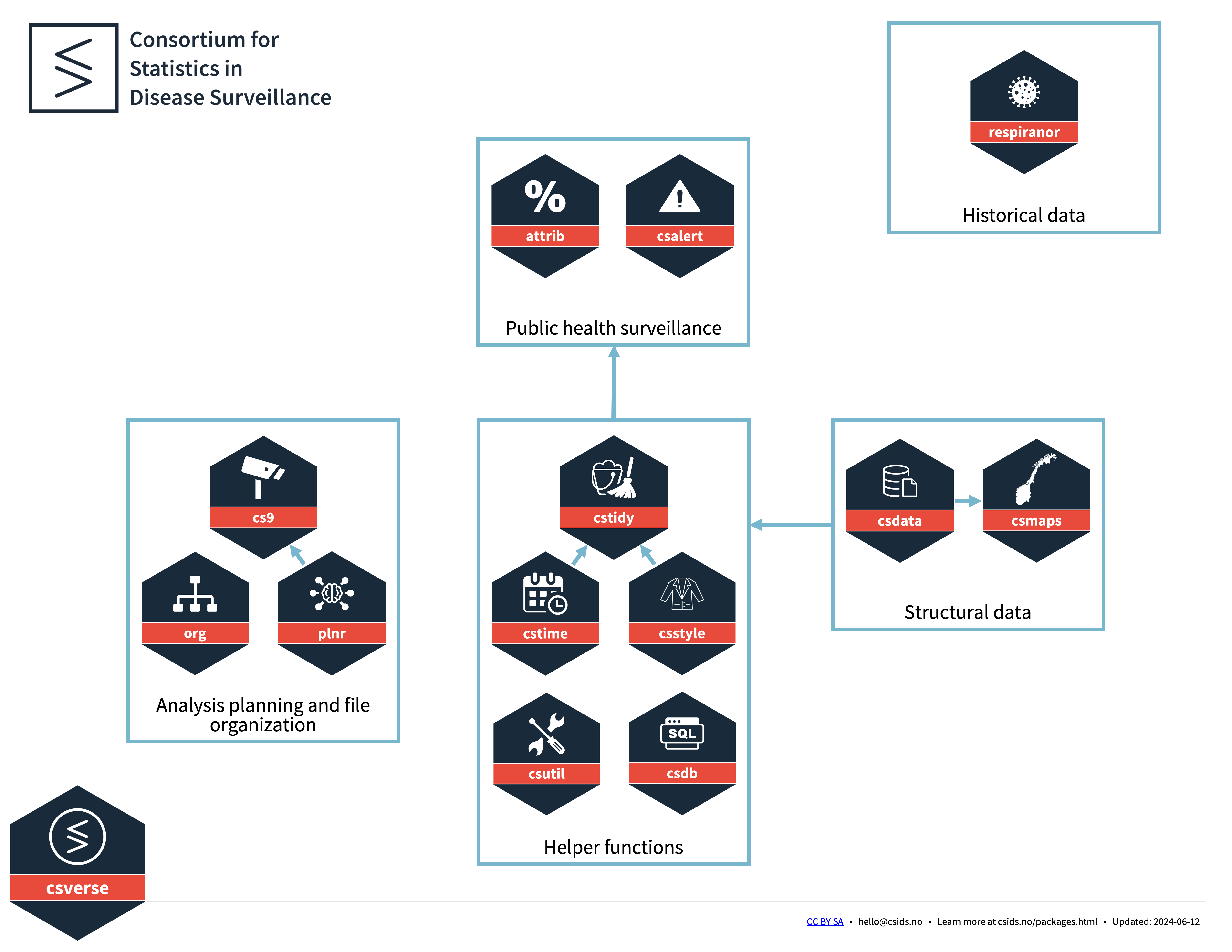
Introduction to the csverse
A set of R packages developed to help solve problems that frequently occur when performing disease surveillance.
Installation and Use
If you want to install the dev versions (or access packages that haven’t been released on CRAN), run usethis::edit_r_profile() to edit your .Rprofile.
Then write in:
options(
repos = structure(c(
csverse = "https://www.csids.no/drat/",
CRAN = "https://cran.rstudio.com"
))
)Save the file and restart R.
You can now install csverse packages from our drat repository.